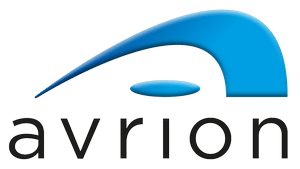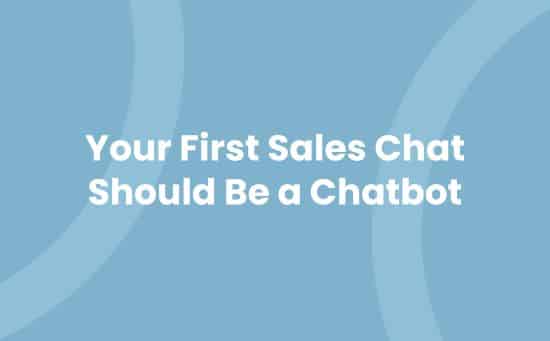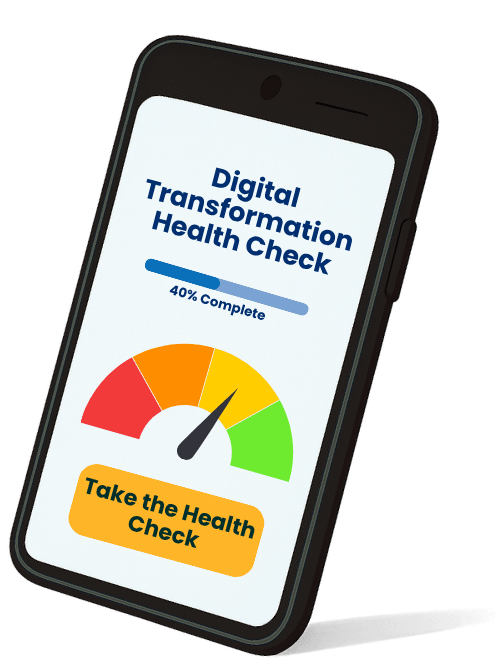Key Takeaways
- First contact sales chatbots serve as AI-powered digital assistants that handle initial customer interactions, operating 24/7 with instant response capabilities
- Key features include automated lead qualification, multi-channel CRM integration, analytics dashboards and personalised responses, reducing cost per interaction from £15-25 to £0.50-2
- Successful implementation requires careful platform selection, systematic configuration steps and well-crafted conversation flows that maintain a balance between automation and human touch
- Essential metrics to track include conversion rates (target: 3-7%), goal completion rates (target: 70-85%) and self-service rates (target: 60-75%)
- Common challenges involve managing complex enquiries and ensuring smooth human handovers, which can be addressed through NLP algorithms, detailed conversation flows and clear escalation protocols
Imagine your sales team spending countless hours responding to basic customer queries instead of closing deals. That’s where a first contact sales chatbot becomes your digital frontline warrior, handling initial customer interactions while your team focuses on high-value conversations that truly matter.
In today’s rapid digital marketplace you can’t afford to keep potential customers waiting. Studies show that 78% of businesses that use AI-powered chatbots have seen improved customer satisfaction scores and reduced response times. By implementing an intelligent chatbot system you’ll transform your sales process from reactive to proactive ensuring no opportunity slips through the cracks.
Ready to revolutionise your sales approach? Let’s explore how this game-changing technology can help you qualify leads engage prospects and boost your conversion rates – all while your sales team sleeps.
What Is a First Contact Sales Chatbot?
A first contact sales chatbot serves as an AI-powered digital assistant that engages potential customers immediately when they visit your website. This automated system handles initial sales interactions through natural language processing technology integrated with your existing sales infrastructure.
Key Features and Capabilities
First contact sales chatbots incorporate essential features that streamline the sales process:
- 24/7 Availability: Engages prospects instantly across multiple time zones without human intervention
- Lead Qualification: Collects visitor information through pre-set questions matching your ideal customer profile
- Dynamic Responses: Adapts conversations based on user inputs using machine learning algorithms
- Multi-channel Integration: Connects with CRM systems for seamless data transfer
- Analytics Dashboard: Tracks engagement metrics including conversation duration response rates visitor demographics
- Personalisation Options: Customises greetings product recommendations based on user behaviour
- Meeting Scheduling: Books appointments directly into sales representatives’ calendars
- Document Sharing: Distributes product catalogues pricing sheets documentation instantly
How It Differs from Traditional Sales Tools
Traditional sales tools focus on manual processes while first contact chatbots offer automated advantages:
| Feature | Traditional Tools | First Contact Chatbots |
|---|---|---|
| Response Time | Minutes to hours | Instant |
| Availability | Business hours | 24/7/365 |
| Lead Capacity | Limited by staff | Unlimited |
| Cost per Interaction | £15-25 | £0.50-2 |
| Data Collection | Manual entry | Automated capture |
- Extract valuable insights from conversation patterns
- Qualify leads automatically using preset criteria
- Route qualified prospects to appropriate sales teams
- Generate detailed interaction reports
- Scale operations without additional staffing
- Maintain consistent brand messaging
- Reduce administrative workload
Benefits of Using Sales Chatbots for Initial Customer Contact
Sales chatbots transform initial customer interactions by automating engagement processes and delivering consistent experiences across multiple touchpoints. These AI-powered assistants enhance your business operations through two primary channels.
Improved Lead Generation and Qualification
Modern sales chatbots excel at capturing and qualifying leads through automated interactions. These digital assistants collect vital contact details including names, email addresses and phone numbers from website visitors automatically. The qualification process operates continuously, filtering prospects based on specific criteria:
- Data Collection: Chatbots gather essential information about budget constraints, project timelines and specific requirements
- Smart Routing: Qualified leads receive immediate direction to appropriate sales team members
- Personalised Engagement: AI algorithms analyse user behaviour to deliver customised product recommendations
- Contact Management: Integration with CRM systems ensures systematic lead tracking and follow-up
Learn more about AI-powered lead qualification at Avrion CRM Solutions
24/7 Availability and Instant Response
Round-the-clock availability distinguishes sales chatbots as essential customer engagement tools. The automated system provides:
- Continuous Operation: Engagement with prospects across time zones without interruption
- Immediate Answers: Response times under 5 seconds for common enquiries
- Queue Management: Systematic handling of multiple conversations simultaneously
- Consistent Communication: Standardised responses maintain brand voice across interactions
- Global Reach: Support for international customers in their preferred time zones
Discover instant response solutions at Business Automation Tools
The chatbot system records each interaction, creating valuable data points for sales analytics and process improvement. Integration capabilities allow seamless connection with existing business tools, enhancing operational efficiency.
Setting Up Your First Contact Sales Chatbot
Implementing a first contact sales chatbot requires careful platform selection and strategic configuration to ensure optimal performance. The setup process involves selecting appropriate technology and following systematic implementation steps.
Choosing the Right Platform
Platform selection forms the foundation of a successful sales chatbot implementation. LumApps, Dialogflow, Microsoft Bot Framework, IBM Watson Assistant and Wit.ai offer comprehensive features for creating, customising and deploying chatbots. These platforms integrate essential capabilities:
- Development Environment: Python-based frameworks provide extensive libraries for natural language processing and machine learning
- Customisation Options: Built-in tools for designing conversation flows tailored to sales processes
- Integration Capabilities: APIs for connecting with CRM systems like Salesforce and Microsoft Dynamics
- Analytics Dashboard: Real-time monitoring of chatbot performance metrics
- Testing Tools: Features for validating responses and optimising conversations
Essential Configuration Steps
Configuration involves systematic steps to create an effective sales chatbot:
- Goal Definition
- Lead generation metrics
- Customer support parameters
- Sales conversion targets
- Conversation Design
- Welcome messages
- Qualification questions
- Response templates
- Handoff protocols
- Technical Setup
- API integrations
- Database connections
- Security protocols
- Testing environments
- Training Parameters
- Intent recognition
- Entity extraction
- Response patterns
- Error handling
Each configuration element requires regular optimisation based on performance data and user interactions. Integration with existing sales tools ensures seamless data flow and consistent customer experiences across channels.
Best Practices for Sales Chatbot Success
Sales chatbot success hinges on strategic implementation techniques that enhance customer engagement while driving measurable business outcomes. The integration of clear goals coupled with the right technology platform creates a foundation for effective chatbot deployment.
Crafting Effective Conversation Flows
Conversation flows form the backbone of a chatbot’s effectiveness in first contact scenarios. Start by mapping customer journeys to identify common entry points enquiries. Structure dialogues with decision trees that guide users through logical pathways while collecting relevant information.
Key elements of effective flows include:
- Opening messages that establish the chatbot’s purpose within 5 seconds
- Qualifying questions that capture lead data without overwhelming users
- Clear response options that move conversations forward naturally
- Escape routes allowing users to connect with human agents when needed
- Error handling protocols that maintain engagement during misunderstandings
Create distinct conversation branches for:
- Product enquiries
- Pricing information
- Technical support
- Sales assistance
- Appointment booking
Learn more about chatbot conversation design at Microsoft Bot Framework
Maintaining the Human Touch
Digital interactions demand a balance between automation efficiency and personalised engagement. Programme your chatbot to incorporate conversational elements that mirror human interaction patterns.
Essential human elements include:
- Natural language processing that recognises context variations
- Personality traits aligned with your brand voice
- Empathetic responses to customer frustrations
- Seamless handoffs to human agents for complex queries
- Follow-up messages that maintain engagement
Personalisation techniques to carry out:
- Using customer names in conversations
- Referencing previous interactions
- Adapting tone based on user responses
- Providing relevant product recommendations
- Matching communication style to customer preferences
Measuring Chatbot Performance
First contact sales chatbots generate valuable performance data that reveals their effectiveness in converting prospects into customers. These metrics provide insights into customer engagement patterns enabling data-driven optimisation strategies.
Key Metrics to Track
Three essential metrics determine the success of a first contact sales chatbot:
- Conversion Rate: The percentage of chat interactions that result in completed purchases through the chatbot interface demonstrates its direct impact on sales revenue. Track this metric to measure the chatbot’s ability to guide prospects through the sales funnel.
- Goal Completion Rate: This metric evaluates the chatbot’s success in achieving specific objectives such as:
- Lead capture
- Meeting scheduling
- Product demonstrations
- Quote requests
- Newsletter signups
- Self-Service Rate: The proportion of customer enquiries resolved without human intervention indicates the chatbot’s efficiency. A higher self-service rate signifies reduced support costs effective automation.
| Metric | Industry Average | Target Range |
|---|---|---|
| Conversion Rate | 2-5% | 3-7% |
| Goal Completion | 65% | 70-85% |
| Self-Service | 55% | 60-75% |
Optimising Conversion Rates
Enhance your chatbot’s conversion performance through these targeted strategies:
- Conversation Flow Analysis
- Monitor drop-off points in chat sequences
- Identify successful conversation patterns
- Streamline question sequences
- Response Optimisation
- Refine answer accuracy
- Reduce response times
- Carry out A/B testing for messages
- Integration Enhancement
- Connect with CRM systems
- Sync with sales platforms
- Enable seamless data transfer
- Personalisation Tactics
- Segment audience responses
- Tailor product recommendations
- Customise follow-up sequences
Learn more about chatbot optimisation
Common Challenges and Solutions
First contact sales chatbots face specific operational hurdles that impact their effectiveness in customer interactions. These challenges require targeted solutions to maintain optimal performance levels.
Managing Complex Enquiries
Complex enquiries present unique challenges for first contact sales chatbots due to their limitations in contextual understanding. Limited comprehension of nuanced customer language creates barriers in resolving intricate customer problems. Here’s how to address these challenges:
Context Enhancement Techniques
- Carry out Natural Language Processing (NLP) algorithms to analyse customer intent
- Create detailed conversation flows with multiple decision paths
- Build comprehensive knowledge bases for common complex scenarios
Personalisation Strategies
- Configure dynamic response patterns based on user data
- Store customer interaction history for contextual references
- Deploy machine learning models to adapt responses over time
Query Management Solutions
- Establish clear categorisation systems for different query types
- Create escalation protocols for queries beyond chatbot capabilities
- Develop feedback loops to improve response accuracy
Seamless Human Handover
Effective human handover processes ensure smooth transitions when chatbots reach their operational limits. A well-structured handover system maintains customer satisfaction during complex interactions.
Handover Triggers
- Define specific phrases indicating customer frustration
- Monitor conversation length thresholds
- Identify complex query patterns requiring human expertise
Transfer Protocol Implementation
- Create instant notification systems for available agents
- Maintain conversation context during transfers
- Establish queue management systems for busy periods
Post-Handover Optimisation
- Record handover scenarios for analysis
- Track resolution rates after transfers
- Update chatbot protocols based on handover patterns
Understanding AI Chatbot Implementation
Conclusion
First contact sales chatbots represent a game-changing solution for modern businesses looking to streamline their sales processes and enhance customer engagement. By implementing these AI-powered assistants you’ll unlock the potential for 24/7 lead generation automated qualification and personalised customer interactions.
The path to success lies in choosing the right platform setting clear objectives and maintaining a balance between automation and human touch. Remember, continuous monitoring and optimisation of your chatbot’s performance will ensure it delivers the results you’re looking for.
Take the first step towards transforming your sales process today. With careful implementation and the right strategy your first contact sales chatbot will become an invaluable asset in driving business growth and customer satisfaction.
Frequently Asked Questions
What is a first contact sales chatbot?
A first contact sales chatbot is an AI-powered digital assistant that engages with website visitors immediately upon arrival. It handles initial customer interactions, qualifies leads through pre-set questions, and provides 24/7 automated responses whilst integrating with existing CRM systems.
How does a sales chatbot improve customer satisfaction?
Sales chatbots enhance customer satisfaction by providing instant responses at any time, ensuring consistent service quality, and reducing wait times. Studies show that 78% of businesses using AI chatbots report improved customer satisfaction through faster response times and reliable service delivery.
What are the key benefits of implementing a sales chatbot?
The main benefits include 24/7 availability, automated lead qualification, reduced operational costs, consistent customer experience, and improved response times. Chatbots also free up human sales teams to focus on complex queries and high-value interactions.
How do sales chatbots qualify leads?
Sales chatbots qualify leads by asking targeted questions, collecting contact information, and evaluating responses against pre-set criteria. They use AI algorithms to score leads based on their answers and behaviour, automatically routing qualified prospects to sales teams.
What metrics should I track for chatbot performance?
Key metrics include conversion rate, goal completion rate, self-service rate, customer satisfaction scores, and response times. Track the number of qualified leads generated, successful handovers to human agents, and average engagement duration.
How much does it cost to implement a sales chatbot?
The cost varies depending on platform choice, customisation needs, and integration requirements. Basic solutions start from a few hundred pounds monthly, while enterprise-level implementations can cost several thousand pounds. Consider factors like maintenance, updates, and training.
Can sales chatbots replace human sales teams?
No, sales chatbots are designed to complement rather than replace human sales teams. They handle routine queries and initial qualification, allowing sales professionals to focus on complex discussions, relationship building, and closing deals.
How long does it take to set up a sales chatbot?
Basic chatbot implementation typically takes 2-4 weeks, including platform selection, configuration, and initial testing. More complex implementations with custom integrations and advanced features can take 2-3 months or longer.



